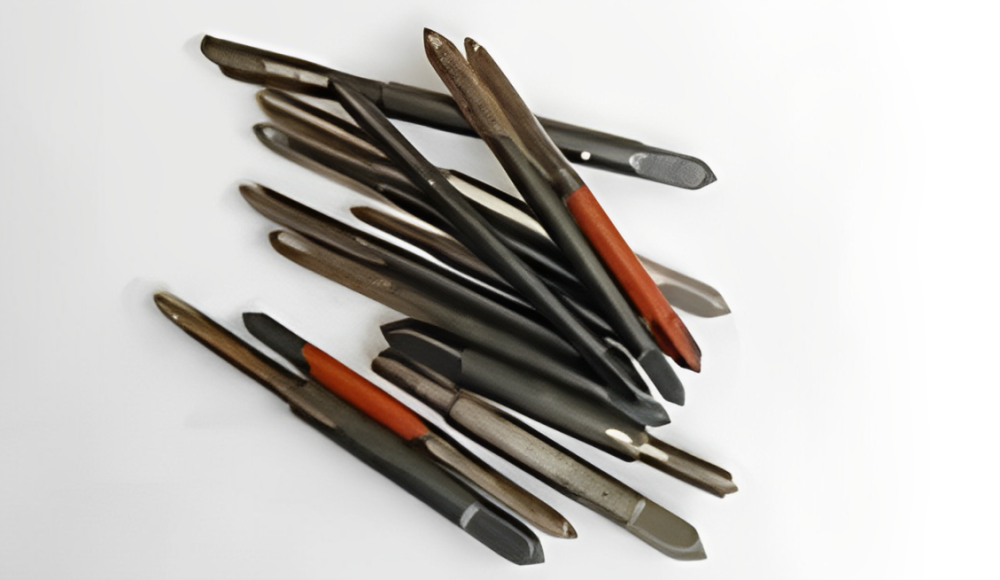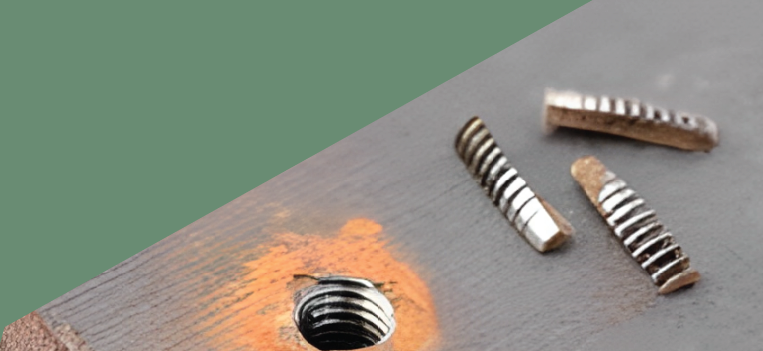Le tournage du métal et du bois constitue une activité essentielle dans la plupart des ateliers de métallurgie et de menuiserie.. Il offre la possibilité de créer ultérieure d'un fil à vis interne. Cependant, Un robinet cassé augmentera la barre pour ceux qui commencent par un processus et pratiquant des artisans. La fissure des robinets est due à des pratiques défavorables, c'est à dire. Médelles méthodes de taraudage, appliquer une pression de haut niveau, ou le mauvais choix de matériel. Donc, dans cet article, Nous discuterons des stratégies efficaces pour éliminer les robinets cassés pour maintenir les fils en place.
Comment définissez-vous le robinet?
Un robinet est un instrument qui est appliqué dans le fil de coupe à l'intérieur d'un trou pour accepter les vis ou les boulons. Il y a des robinets manuels et des robinets de machine. Ils sont généralement fabriqués en acier ou en glucides à grande vitesse pour leur utilisation durable. Si nous les utilisons de manière appropriée, Les robinets produisent des fils soignés et pointus qui garantissent un joint parfait entre deux surfaces.
Top dix raisons pour lesquelles les robinets se brisent?
Voici quelques raisons courantes pour lesquelles les robinets se brisent:
- Utilisation incorrecte: Les méthodes de taraudage défectueuses qui peuvent s'avérer désastreuses comprennent le fait de ne pas s'assurer que le robinet est centré sur le trou.
- Force excessive: Il est recommandé qu'une quantité particulière de robinet de pression tapotement, Sinon, l'outil peut se casser en matériau dur.
- Dureté du matériau: Le robinet peut être surcastré lorsqu'il pénètre dans les métaux durs.
- Lubrification inadéquate: L'utilisation de liquides de coupe peut empêcher le frottement et le décrochage, La surchauffe des outils provoquant ainsi des ruptures fréquentes.
- Robinets usés ou ternes: Si un utilisateur décide d'utiliser des robinets qui sont utilisés depuis un certain temps ou d'avoir une surface terne. Ensuite, plus de force sera nécessaire pour entraîner des ruptures.
- Taille du robinet incorrect: Si le mauvais côté du filetage taraudé est utilisé. Puis des problèmes de filetage se produisent et le robinet peut se casser.
- Entreprenant: Le désalignement contribue à, conduisant au risque de rupture du robinet.
- Contamination des matériaux: Toute intrusion des particules de sol, poussière, ou d'autres polluants pourraient provoquer un brouillage du robinet et de ses capacités de coupe.
- Secousses soudaines: Tirer le robinet du trou peut être un problème majeur. Parce que s'il est coincé, vous pouvez tirer si fort qu'il se brise.
- Stockage inapproprié: Lorsqu'ils sont stockés de manière incorrecte car certains des robinets sont affectés par le mauvais stockage, Ils peuvent finir par casser.
12 Façons de supprimer les robinets cassés
Donc, Discutons de certaines des mesures importantes que nous pouvons prendre pour éliminer les robinets cassés:
1. Utilisez un extracteur de robinet
Les extracteurs de robinet sont des instruments spécifiquement utilisés pour retirer un robinet cassé et peuvent maintenir le robinet pour le retrait. Ils ont des flûtes avec un extracteur qui se verrouille dans le robinet cassé, sécuriser un achat sur le matériau pour le tourner dans le sens antihoraire.
2. Percevoir
Fermer progressivement un trou au centre du robinet cassé, augmenter la taille de la perceuse, puis retirer les restes du robinet. Utilisez d'abord une petite taille pour gagner un trou pilote qui peut créer un fil supplémentaire, et augmenter progressivement la taille. Donc, il peut supprimer le matériau du robinet sans déformer les autres threads.
3. Appliquer la chaleur
Jetez la lumière autour de la zone affectée à l'aide d'une torche pour essayer d'étendre le métal et soulager probablement le robinet coincé. L'expansion thermique peut contribuer de manière décisive à la perturbation de l'adhésion du robinet à la pièce, ce qui le rend facilement amovible.
4. Utilisez un foret de gauche
Essayez avec un foret à gauche, Cela peut saisir directement le robinet cassé et le dévisser. La spirale de gauche tournera dans le sens des aiguilles d'une montre et dans le processus, il est neutralisé et peut capturer la bobine du robinet cassé.
5. Utilisez des pinces ou des poignées vides
Lorsqu'une partie du robinet projette, Il peut être retiré en utilisant des pinces ou des poignées vides, puis tourné. Assurez-vous que la main sur le robinet ne glisse pas autour.
6. Utilisez un extracteur à vis
Placer un extracteur à vis dans le trou qui a été fait pour retirer le robinet cassé et le tordre une direction dans le sens antihoraire. Les extracteurs à vis sont des ciseaux avec des coupes inverses qui se verrouillent sur le robinet lorsque vous le tournez.
7. Traitements chimiques
Utilisez des huiles pénétrantes ou des déménagements de rouille pour aider à briser l'écrou du robinet cassé. Certaines de ces substances peuvent pénétrer dans le fil et faire en sorte que de la rouille ou des débris maintiennent le robinet en place pour se dissoudre.
8. Tapotage et martèlement
Essayez de sauter autour du lieu du robinet endommagé afin que les vibrations puissent aider à libérer le robinet cassé. Il peut également aider à éliminer les débris qui auraient pu faire coller le robinet.
9. Aimant
Parfois, le tapotement est fait d'un matériau magnétique. Si c'est le cas, un aimant fort peut être utilisé pour extraire le robinet. Si une partie du robinet est accessible, Amenez doucement l'aimant à proximité, Et il est susceptible de le tourner.
10. Souder un écrou
Enfilez un autre écrou à l'extrémité ouverte du robinet cassé, Cela donne une poignée pour le tourner pour le retrait. Cette approche développe un bon brin, en ce que vous pouvez utiliser une clé pour tordre le robinet cassé.
11. Outil Dremel
Coupez le robinet avec un dremel, maintenez-le jusqu'à ce que vous puissiez obtenir une meilleure adhérence, ou retirer. Il peut aider à produire une surface plate sur le dessus du robinet cassé à l'aide du dremel.
12. Aide professionnelle
Si rien ne fonctionne, Il est préférable de consulter des machinistes ou des métallurgistes pour obtenir la solution la plus appropriée. Ils ont les compétences et les procédures appropriées pour éliminer les robinets cassés sans affecter la pièce.
Nous pouvons résumer les causes et leurs solutions dans un tableau:
| Cause | Effet | Solution |
| Utilisation incorrecte | Puiser un désalignement conduisant à une rupture. | Assurez-vous que le robinet est centré sur le trou avant de taper. |
| Force excessive | Augmentation du stress sur le robinet, Le faire se casser. | Utilisez la quantité de pression recommandée pendant le tapotement. |
| Dureté du matériau | Le robinet peut devenir surcléré dans les matériaux durs. | Utilisez des robinets spécialement conçus pour des matériaux plus durs. |
| Lubrification inadéquate | Augmentation des frictions et surchauffe de l'outil. | Appliquez toujours des liquides ou des lubrifiants de coupe adéquats. |
| Robinets usés ou ternes | Plus de force est nécessaire, conduisant à une rupture. | Remplacez les robinets usés ou ternes par de nouveaux avant utilisation. |
| Taille du robinet incorrect | Problèmes de filetage et casse potentielle du robinet. | Vérifiez que la taille correcte du robinet est utilisée pour le fil prévu. |
| Entreprenant | Risque accru de rupture du robinet. | Alignez correctement le robinet pour éviter. |
| Contamination des matériaux | Brouiller en raison de la saleté ou des débris. | Gardez la zone de travail propre et assurez-vous qu'aucun contaminant n'est présent. |
| Secousses soudaines | Une probabilité accrue de rupture lors de la sortie. | Évitez de tirer trop fort; Utilisez des techniques d'extraction appropriées. |
| Stockage inapproprié | Les dommages aux robinets peuvent entraîner une rupture pendant l'utilisation. | Stocker des robinets dans un coffre-fort, endroit sec pour éviter les dommages. |
Cinq meilleures pratiques pour créer des fils internes sans casser les robinets
En considérant les causes ci-dessus et leurs solutions pour éliminer le robinet cassé. Discutons de quelques pratiques importantes que nous pouvons suivre pour éviter la rupture:
- Alignement approprié: Honnêtement, Assurez-vous que le robinet s'aligne sur le trou afin qu'un producteur ne fixe pas le robinet incorrectement. Cela mettra une pression inutile sur le robinet.
- Utilisez le bon robinet et la taille: Peigne toujours monté pour réduire les risques associés à la rupture de matériau pour l'application.
- Lubrification adéquate: Coupe de coupe pour minimiser le contact du robinet avec la pièce. Donc, Il peut réduire et minimiser la génération de chaleur qui provoque la rupture du robinet.
- Vitesse et pression contrôlées: Il est nécessaire d'appliquer une vitesse de taraudage lente et cela ne devrait pas être accompagné d'une grande pression pour obtenir une «coupe» lisse.
- Nettoyer le trou: Le nettoyage du trou est d'abord une approche recommandée pour éviter de frapper les déchets et en outre, Le nettoyage du trou facilite le taraudage et le risque d'endommager le robinet plus bas.
Conclusion
En conclusion, Il peut être difficile de retirer un robinet cassé. À présent, Nous avons discuté de la façon de minimiser les chances de ruptures de robinet à l'avenir si nous suivons les pratiques internes de filetage internes recommandées. En appliquant les bonnes connaissances et en utilisant le bon équipement, Il est possible de préserver la réputation de votre travail et d'obtenir les résultats souhaités dans tous les domaines des parties prenantes.
Questions fréquemment posées
1. Une perceuse standard peut-elle être utilisée lors de l'extraction d'un robinet cassé?
Oui, Mais il y a un petit changement que vous devez avoir la taille appropriée pour le foret. mis-à-part, Vous devez faire attention à ne pas nuire à la surface environnante.
2. Ce qui peut être fait ainsi (robinets) Ne cassez pas régulièrement?
Le désalignement, Le type de taille de robinet utilisé, lubrification insuffisante, et une pression excessive peut provoquer une rupture. Donc, Évitez-les autant que possible.
3. Que dois-je faire quand il se casse dans un matériau doux?
Certains matériaux peuvent être doux et peuvent être retirés à l'aide de pinces ou des outils d'extraction sans affecter les autres sections.
4. Les extracteurs de robinet sont-ils un achat précieux?
Oui, Les extracteurs de puise sont délibérément conçus pour ce type de situation et ils fonctionnent mieux pour économiser le temps et l'effort individuels.
5. Peut-on utiliser la chaleur pour éliminer un robinet cassé?
Oui, La chaleur peut étendre le métal environnant améliorant la facilité avec laquelle le robinet est retiré. Mais cela doit être fait avec soin pour éviter toute dégradation du matériel.
6. Les robinets cassés peuvent-ils être réutilisés?
Il est recommandé de ne pas réutiliser les anciens robinets car ils pourraient être mal construits ou peut-être dans un état mal en forme.
7. Quel outil dois-je utiliser pour supprimer un robinet cassé?
Ceux-ci peuvent être des extracteurs de robinet, exercices, exercices de gauche, extracteurs à vis, pinces, et la chaleur.











